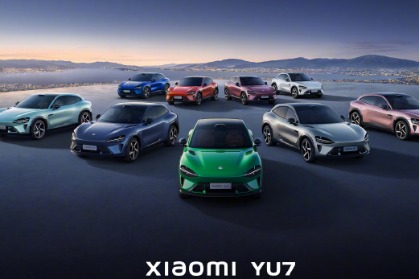'Made in China' means little if its brands copycat

China's break-neck expansion has captured the world's attention and appears unstoppable with double-digit GDP growth year after year.
|

|
Low-cost, price-based competitive advantage is not only not sustainable, it leads to the creation of a business culture that may not be that easy to change. Despite this, Chinese companies and their brands are beginning to emerge globally. Li Ning, China Mobile, Huawei, Haier and Lenovo are examples of China's larger companies, while Feiyue (athletic shoes), Trands and Septwolves (both men's clothing brands) are shining lights in China's small business sector. However, none of them can genuinely lay claim to first-tier global brand status.
So why, despite recently becoming the second largest world economy, is there still not a single Chinese global brand? Five of the major reasons are:
a myopic corporate culture
poor product quality control
a propensity for copying established brands
a lack of innovation in product design
weak brand strategy
A myopic corporate culture among Chinese businesses is a major obstacle to brand development. This approach of short-term sales and profits, often at the expense of product quality, strangles any hopes of successful branding. Such cost control also leads to a rejection in the investment in staff development, essential for sustainable brand competitiveness. Change, however, does appear to be on the horizon with younger Chinese management. Those born after the "open door" policy offer real hope of more progressive, inclusive management and leadership.
Poor product quality control remains a regrettable association with "made in China", often interpreted as low cost, cheap and unreliable. Product quality is, and always will be, the bedrock of branding. Once a reputation for questionable quality has been established, it can be extremely difficult for change, even if product quality is improved.
A propensity for copying established brands may lead to some short-term success, but it will be at the expense of long-term brand development. This temptation must be overcome and, encouragingly, appears to be happening with Li Ning's recent re-branding. Li Ning's current slogan, "Make the Change", is a vast improvement on their previous slogan of "Anything is Possible", a ripoff of adidas' "Impossible is Nothing". This tendency to copy is due to a lack of confidence, which will gradually change as Chinese firms become more successful internationally. Chinese brand managers should take confidence from success stories both past and present.
A lack of innovation in product design is evident even among China's leading companies. Lenovo, for example, has not produced a single, innovative new product since its takeover of IBM's PC division in 2005. Change does appear to be happening, with China Mobile's imminent rollout of its 4G network. The Chinese government is also investing heavily in high-tech industries and will continue to do so. Let's not forget that ancient China was replete with inventions, perhaps more so than any other country. Innovation is, therefore, an integral part of Chinese culture.
Weak brand strategy perhaps represents an amalgamation of the previous points but also includes major branding issues such as brand naming, brand positioning and brand association. Chinese firms still rely heavily on corporate branding, using the company name as the dominant brand name. In order to differentiate new and emotionally loaded product, brand names are unavoidable. Product branding, introducing a new brand name for each new product, not only allows for greater creativity, it also promotes a more consumer-oriented culture.
Brand positioning is always built on consistency in product quality. But to achieve sustainable competitive advantage an emotional proposition needs to be established firmly in the consumer's mind. A huge opportunity for Chinese enterprises here is the multitude of associations throughout Chinese history. Ancient China enjoys a very positive image throughout the world and is one of the major reasons why China is fast becoming a major tourist destination. In addition to the obvious associations, such as the Great Wall, Chinese culture remains rich in symbolic form with famous mountains, lakes, festivals and people too numerous to mention. Despite this, Chinese firms appear to shun these natural advantages. For example, Trands (based in Dalian) makes use of the slogan "unique Italian flair".
In summary, most would agree that China's economy is experiencing a turning point. The low cost business model is on its last legs, which necessitates an even speedier transition toward a more progressive, modern business culture. Such a business culture should put brand development and investment first. There is no reason why "made in China" cannot become associated with quality, innovation and fashion.
Perhaps what is lacking is the ingredient or catalyst required for change. While Chinese firms must resist the temptation to copy successful foreign brands, it is vital that they learn about the branding process that has led to their development. An essential ingredient throughout this brand development process has always been a supportive and facilitative government. Perhaps we need to see a more supportive Chinese government that enables Chinese firms to achieve international success with world-class Chinese brands. Such support could involve long-term finance and assistance with training and development as well as policies that curb short-term profiteering. One immediate initiative worth considering might be the enforcement of more co-branding between Chinese and foreign firms rather than joint venture partnerships. Co-branding should expedite change toward this brand-oriented business culture as well as provide more Chinese companies with international exposure.
Finally, the emergence of the Chinese brand is happening and will continue - the only question is time. Having worked in brand management in China since the 1990s, it is the Chinese hunger for commercial success that has proved most overwhelming. This, provided it is channeled into the brand-building process, more than anything else should propel China to sustainable economic success.
The author is visiting professor of brand management at China Agricultural University. He also teaches marketing and management at Tsinghua University.
Today's Top News
- Xi urges villagers in Xizang to uphold ethnic solidarity
- Digital tax sparks breakdown in US-Canada trade talks
- Expert debunks Lai's 'four elements' argument for Taiwan's so-called statehood
- China opposes any tariff deal made at its expense: commerce ministry
- Nepal's hydropower a climate change solution
- UN Charter still guiding compass of humankind































